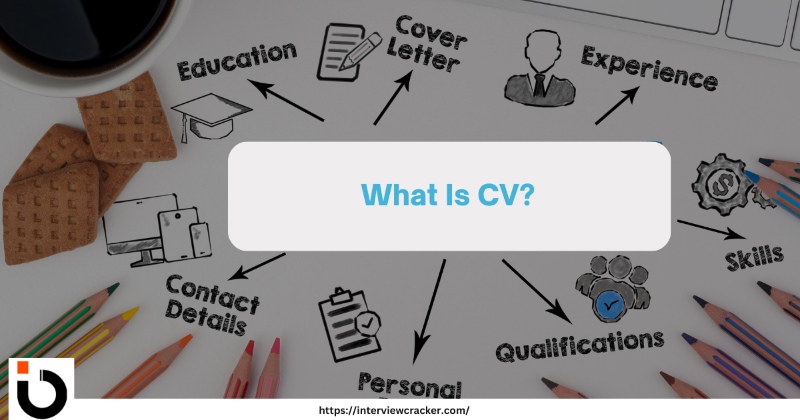A Curriculum Vitae (CV) is a critical document that plays a pivotal role in one’s professional journey. Whether you’re a student, job seeker, or someone with years of experience, a well-crafted CV can be your ticket to landing your dream job. In this comprehensive guide, we will delve deeper into various questions related to CVs and provide you with valuable insights, tips, and examples to help you create an impressive CV that stands out.
Table of Contents
ToggleWhat is CV Full Form in English?
CV full form is “Curriculum Vitae,” which is a Latin term that means “Course of Life” in English. CV full form for job is also the same. In many countries we use “CV for job” and “resume for job” interchangeably.
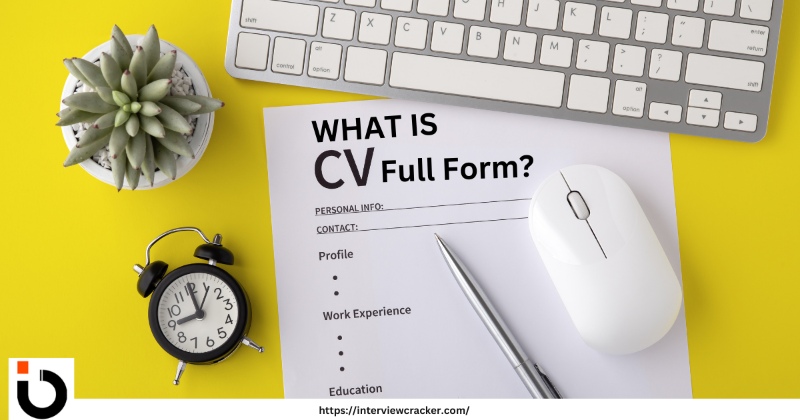
What is a CV? Definition and Meaning of Curriculum Vitae
A CV is a comprehensive document that outlines a person’s educational background, work experience, skills, achievements, and other relevant qualifications. It is typically used by job applicants when applying for academic positions, research opportunities, or professional positions in various industries.
The CV provides a detailed overview of the individual’s professional history, including their employment history, academic qualifications, research projects, publications, presentations, honors, awards, and other pertinent information.
Why is a CV Important?
- A CV is essential because it provides a comprehensive summary of your qualifications, skills, and experiences.
- It serves as a first impression for potential employers and can determine whether you get invited for an interview.
- A well-structured CV showcases your professional background and suitability for a particular job.
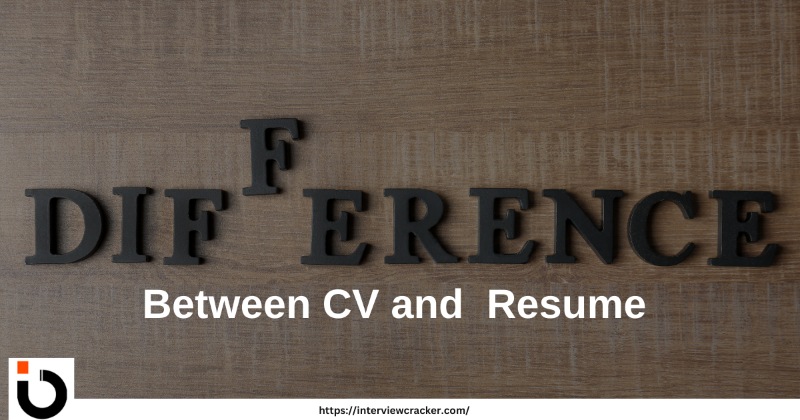
What is the Difference Between CV and Resume?
The main differences between CV and a Resume are:
- A resume is more concise and tailored to specific job applications, while a CV is usually longer and contains more extensive information.
- In some countries, the term “CV” is used interchangeably with “resume” in a job application.
- In most cases, a CV refers to a more detailed and comprehensive document used primarily in academic and research fields while resume is used only for job applications.
What is a Summary for CV?
A CV summary, also known as a “Summary Statement” or “Profile,” is a brief section at the beginning of a curriculum vitae (CV) or resume. It provides an overview of your qualifications, skills, and career objectives. The CV summary should serve as a snapshot of your professional identity and what you can bring to a potential employer.
CV Summary Examples
Here are a few examples of CV summary statements across different industries:
- CV summary For a Sales Representative: Results-oriented sales representative with a proven history of exceeding sales targets in competitive markets. Exceptional communication skills and a talent for building and nurturing client relationships. Skilled at identifying client needs and tailoring solutions to drive revenue growth.
- CV summary For a Software Developer: Results-driven software developer with a strong foundation in full-stack development. Proficient in JavaScript, Python, and React, with a proven track record of delivering efficient and scalable web applications. Committed to continuous learning and collaborating with cross-functional teams to drive innovation.
- CV summary For a Marketing Manager: Strategic marketing manager with 8 years of experience creating and executing successful marketing campaigns. Expertise in digital marketing, social media, and brand management. Proven ability to drive brand growth and engagement through data-driven insights and creative solutions.
- CV summary For a Project Manager: Accomplished project manager with a background in leading cross-functional teams to deliver complex projects on time and within budget. PMP-certified with a strong aptitude for process optimization and stakeholder communication. Known for fostering collaborative environments that drive project success.
- CV summary For a Financial Analyst: Detail-oriented financial analyst with a solid foundation in data analysis and forecasting. Proficient in financial modeling, budgeting, and variance analysis. Strong communicator with a track record of delivering actionable insights to support strategic decision-making.
Remember, your CV summary should reflect your unique skills, experiences, and career aspirations while aligning with the specific job you’re applying for. Tailor your summary to highlight the qualifications that make you a strong fit for the role.
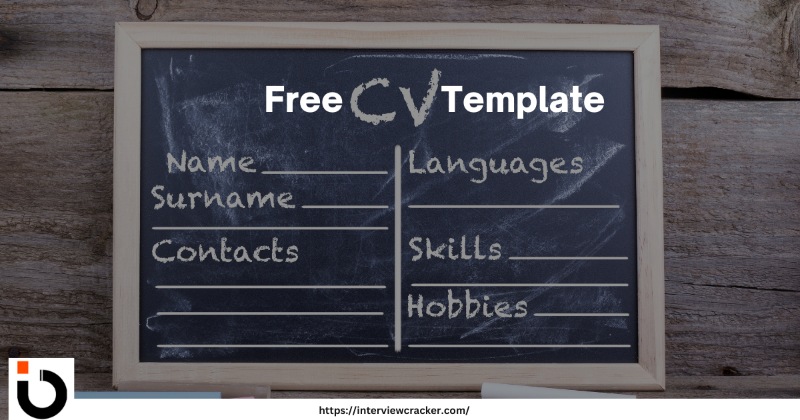
How to Write a CV in English? | How do I write my CV?
Writing a CV in English requires attention to detail and clarity. Follow these guidelines:
- Use clear and concise language. Avoid jargon or complex phrases.
- Follow the appropriate format and structure, typically including personal information, objective or summary, education, work experience, skills, and additional sections.
- Proofread your CV carefully for grammar and spelling errors. Consider seeking assistance from a native English speaker if needed.
What is a Simple CV Format?
- A simple CV format typically includes your contact information, a brief summary or objective, your education, work experience, skills, and any additional relevant sections like certifications or hobbies.
- Here’s a basic example of a simple CV format:
[Your Name]
[Your Contact Information]
Objective:
[Brief summary of your career goals and what you bring to the table]
Education:
[List of your academic qualifications, including degrees, institutions, and dates]
Work Experience:
[Chronological list of your work history, including job titles, companies, and dates]
Skills:
[Key skills relevant to the job you’re applying for]
Additional Sections:
[Any other relevant information, such as certifications, languages, or hobbies]
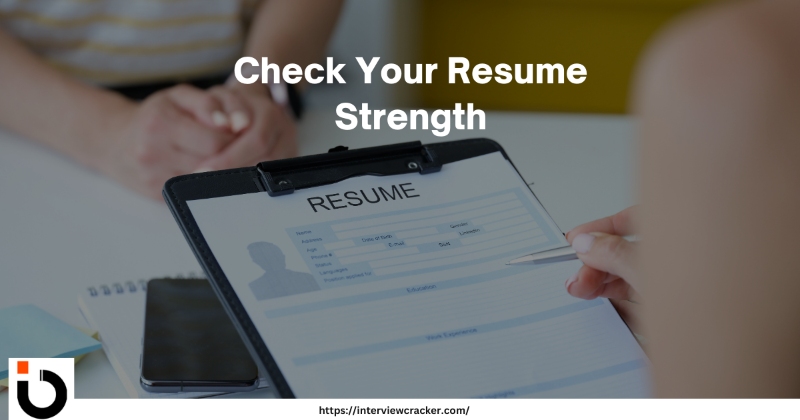
What are the 5 Main Parts of a CV?
There are 5 basic sections in a CV that you can’t avoid. A well-structured CV (Curriculum Vitae) typically consists of below mentioned five main parts or sections:
1. Contact Information:
This section should include your full name, phone number, and email address.
2. Resume Summary or Objective:
While not always necessary, a summary or objective statement in a resume can provide a snapshot of your career goals and qualifications. A summary highlights your relevant skills and experiences, while an objective outlines your career goals and how they align with the job you’re applying for.
3. Professional Experience (Work History):
This section is one of the most critical parts of your CV. It should detail your work history in reverse chronological order, starting with your most recent job. For each position, include:
- Job title
- Company or organization name
- Dates of employment (start and end)
- Responsibilities and achievements
- Use bullet points to list specific accomplishments, responsibilities, and contributions you made in each role. Quantify your achievements whenever possible to showcase your impact.
4. Education:
In this section, list your educational background in reverse chronological order, starting with your most recent degree or qualification. Include:
- Degree or certification earned
- Name of the institution
- Location (city, state/country)
- Graduation date (or expected graduation date)
- You can also include relevant coursework, honors, or awards if they add value to your application.
5. Skills:
The skills section highlights the relevant skills and qualifications that are specific to the job you’re applying for. These can be categorized into technical skills (e.g., programming languages, software proficiency) and soft skills (e.g., communication, teamwork). Please make sure to tailor this section to match the requirements of the position you’re looking for.
You can add a Declaration in your CV at the end.
What are the 7 Basic Steps to Writing a CV?
- Research the job and company to understand their requirements and culture.
- Choose the appropriate CV format, such as chronological, functional, or a combination.
- Include your contact information, including your full name, phone number, email address, and LinkedIn profile (if applicable).
- Create a compelling summary or objective statement that highlights your career goals and what you can offer to the employer.
- Highlight your education, starting with the most recent degree earned and working backward.
- Detail your work experience, emphasizing achievements and responsibilities.
- Showcase your skills, both technical and soft, that are relevant to the job.

FAQs on CV
What is CV Full Form in Medical?
When referring to job applications and interviews within the medical field, CV stands for Curriculum Vitae. However, in a medical context, CV signifies CardioVascular.
What Does CV Stands For?
CV stands for “Curriculum Vitae”. CV is loosely used for resume. In many countries cv means resume. But cv and resume difference is there, that is mentioned above.
What is CV Full Form in Computer?
In Computer industry CV stands for Computer Vision.
Computer vision is the interdisciplinary field focused on enabling computers to interpret and understand visual information from the world.
What is CV long Form?
CV long form is “Curriculum Vitae”. It is a Latin term that means “Course of Life” in English. In terms of jobs, CV means resume( with slight difference).
What is CV Full Form in Statistics?
In the field of statistics, “CV” typically stands for “Coefficient of Variation.” The coefficient of variation is a standardized measure of the dispersion or variability of a set of data points relative to their mean, often expressed as a percentage. It is used to compare the variability of different datasets, especially when their means are not directly comparable.
What is CV for Students?
- A student CV focuses on your academic achievements, extracurricular activities, internships, and any relevant coursework. It highlights your potential and willingness to learn.
- Consider the following tips when creating a student CV:
- Emphasize your academic accomplishments, including your GPA if it’s strong.
- Highlight relevant coursework and projects.
- Include any volunteer work, internships, or part-time jobs.
- Showcase leadership roles in student organizations or clubs.
What is a CV For Jobs?
- A job CV emphasizes your work history, skills, accomplishments, and relevant qualifications. It’s tailored to match the requirements of a specific job.
- When crafting a job-specific CV, focus on:
- Tailoring your CV for each job application to highlight relevant skills and experiences.
- Using action verbs to describe your accomplishments in previous roles.
- Quantifying your achievements with specific numbers or percentages when possible (e.g., “increased sales by 20%”).
- Including a professional summary or objective statement that aligns with the job you’re applying for.
How Do I Make a CV on My Phone?
Creating a CV on your phone is possible with the help of mobile-friendly CV apps or websites designed for this purpose. Follow these steps:
- Download a CV app or visit a mobile-friendly CV website.
- Enter your information, including personal details, education, work experience, and skills.
- Select a template and customize it according to your preferences.
- Save or export your CV as a PDF or other compatible format.
How Do I Write CV for My First Job?
Writing a CV for your first job can be challenging, but it’s important to convey your potential and enthusiasm. Focus on:
- Highlighting your educational achievements, relevant coursework, and any internships or volunteer work.
- Showcasing transferable skills such as communication, teamwork, and problem-solving.
- Expressing your eagerness to learn and contribute to the company.
How to Write a CV PDF?
- After creating your CV in a word processing software, it’s essential to save it as a PDF to ensure it maintains its formatting when viewed by others.
- Most word processors offer an option to save or export documents as PDFs. Choose this option when finalizing your CV.
Difference Between CV Resume and Biodata
Understanding the distinctions between these terms is essential:
CV (Curriculum Vitae): A CV is a comprehensive document that lists your academic and professional history in detail. It typically includes education, work experience, skills, publications, presentations, and other relevant information. CVs are often longer than resumes.
Resume: A resume is a shorter document (usually one to two pages) that summarizes your relevant work experience, skills, and qualifications. Resumes are highly tailored to specific job applications and focus on conciseness and impact.
Biodata: Biodata is a concise document that provides basic personal information, including name, date of birth, marital status, and sometimes a brief summary of qualifications. It is often used in certain regions and for specific purposes, such as marriage proposals or government applications.
How to Write CV Without Experience?
Crafting a CV without extensive work experience can be challenging, but it’s essential to focus on your potential, skills, and willingness to learn. Here’s how:
- Emphasize your education, highlighting relevant coursework, projects, and academic achievements.
- Include internships, volunteer work, or part-time jobs, even if they aren’t directly related to your desired field. Describe the skills you gained and contributions you made.
- Highlight transferable skills such as communication, teamwork, problem-solving, and adaptability.
You will have to write your CV as freshers or interns.
How Many Pages Should a CV be?
Most recruiters prefer one page resume, but if you are a senior and have lots of experience that needs to be shown then, it might go to 2-3 pages.
How Can I Edit My CV?
Start building your CV with AI- Powered CV Builder here.
Editing your CV is a crucial step in ensuring it’s accurate and up-to-date. Here’s how:
- Use word processing software such as Microsoft Word or Google Docs to open your CV document.
- Review each section carefully for accuracy and completeness.
- Check for grammatical errors, typos, and formatting issues.
- Consider seeking feedback from a trusted friend or colleague for additional insights and proofreading.
Creating an effective CV is a crucial step in your career journey. By understanding the importance of a CV and following the steps outlined in this comprehensive guide, you can craft a compelling document that sets you apart from the competition and opens doors to exciting opportunities. Remember to tailor your CV for each job application to maximize your chances of success. Your CV is not just a piece of paper; it’s your personal marketing tool that showcases your potential and qualifications to the world.

